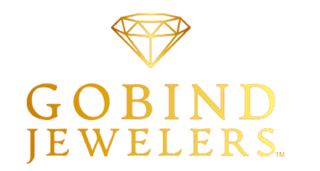Can A Jeweler Tell The Difference Between Lab-Grown Diamonds?
There are moments when a diamond is more than a purchase.
The lights are soft, your hands are still, and a ring is slipped onto your finger—perhaps after the pheras, perhaps in an intimate engagement at home. The gold warms against your skin, the diamond catches every ray like a tiny diya.
Then someone asks, quietly:
“Is it natural… or is it lab grown?”
“Can a jeweler tell the difference between lab grown diamonds and natural ones?”
At Gobind™️ Jewelers in Fresno, CA—where 22K gold, fine diamond work, and Indian heritage walk hand in hand—this question is not about suspicion. It is about understanding the story behind the stone you wear every day.
Quick Answer: Can A Jeweler Tell The Difference?
To the naked eye, lab grown and natural diamonds can look the same.
A trained jeweler, using magnification and modern tools, can tell the difference.
In simple terms:
-
A skilled jeweler: Can read subtle signs under magnification and, when needed, with specialized instruments.
-
Professional labs and testers: Can definitively classify whether a diamond is natural or lab grown.
The diamond on your hand may look like it came from a royal treasury—and in everyday life, it will be admired exactly that way, regardless of origin.
Lab Grown vs Natural Diamonds: Same Sparkle, Different Journey
Before we talk about detection, it helps to understand what makes these diamonds “twins with different childhoods.”
Natural diamonds
-
Formed deep in the earth over millions of years.
-
Brought to the surface through powerful geological forces.
Lab grown diamonds
-
Created in a controlled environment that mirrors those intense conditions.
-
Grown using advanced technology over weeks instead of ages.
Both are:
-
Real diamonds
-
Made of carbon
-
Capable of remarkable fire and brilliance when well cut
Gem Fact
A well-cut lab grown diamond and a well-cut natural diamond of the same grade can look identical on the hand—even to people who have spent their lives around jewelry.
What A Jeweler Actually Sees
A jeweler’s work is a little like a family astrologer reading a detailed chart: to most eyes it’s just symbols; to trained eyes it’s a story.
With The Naked Eye
When your ring is on your finger, even a jeweler will first see:
-
The overall sparkle
-
The symmetry of the cut
-
The way the stone sits in its setting
At this level, origin doesn’t announce itself. A clean, bright diamond in a beautiful 22K or 18K setting will simply look luxurious.
Under The Loupe: Tiny Clues In The Diamond
The real reading begins under magnification. With a loupe or microscope, a jeweler looks for:
-
Inclusions – tiny internal features
-
Growth patterns – the way the crystal structure developed
-
Surface marks that may hint at how the stone was formed
Natural diamonds often carry inclusions that feel like echoes of the earth: small crystals, wisps, feather-like shapes that tell a slow, geological story.
Lab grown diamonds may show:
-
Different types of internal growth lines
-
Characteristic inclusion patterns from the growth process
These details are subtle. They don’t make the diamond “less beautiful”—they simply reveal its origin to a trained eye.
Design Insight
-
Think of inclusions as the handwriting of the diamond’s journey.
-
Natural and lab grown diamonds write in slightly different scripts.
A jeweler is trained to read both.
With Advanced Instruments: The Final Word
For complete certainty—especially with higher value stones—jewelers and grading labs turn to specialized devices that read how a diamond interacts with light and energy at a very deep level.
These instruments can:
-
Separate natural diamonds from lab grown
-
Confirm what the inclusions and patterns suggest
-
Support clear, documented disclosure on certificates and appraisals
At Gobind™️, this is part of protecting you. The goal is never to “catch” anyone; it is to make sure what is sold and what is worn are always honestly aligned.
Does It Matter If Your Diamond Is Lab Grown?
For many in our community, a diamond carries the weight of tradition:
-
Engagements blessed by elders
-
Weddings under the mandap
-
Anniversaries marked with new bangles, earrings, or a sparkling ring upgrade
In that world, clarity matters more than mystery.
What truly matters is:
-
You know whether your diamond is natural or lab grown.
-
Your jeweler has disclosed it honestly.
-
The documentation—certificates, appraisals, invoices—matches the truth.
Expert Tip
Keep your diamond’s certificate and purchase documents as carefully as you keep your wedding photos. They don’t just prove what you bought—they hold the “official history” of the piece.
At Gobind™️, we respect both paths: the diamond shaped slowly in the earth and the diamond grown with modern precision.
Our work is to help you choose the one that feels right for your story—and to name it clearly.
How Gobind™️ Jewelers Guides You
When you come to Gobind™️ Jewelers—whether you’re choosing a new ring or bringing in one you already treasure—we can help you:
-
Compare natural and lab grown diamonds side by side.
-
View your stone under magnification and talk through what you see.
-
Understand grading reports, certificates, and appraisals.
-
Plan future choices: resetting, upgrading, or designing around the stone you have.
You can visit our Fresno, CA showroom or start privately with Ask Ananya, our virtual assistant, if you prefer to ask your first questions from home.
Final Thoughts: Your Diamond’s Story, Facet By Facet
So, can a jeweler tell the difference between lab grown diamonds and natural diamonds?
Yes.
With training, tools, and care, we can read the story written inside the stone.
But for you, the most important part is this:
-
That your diamond has been honestly described.
-
That you understand what you own.
That when you look down at your hand—at the ring set in glowing gold—you feel pride, not doubt.
At Gobind™️ Jewelers, every diamond, whether born in the earth or grown in a modern “workshop of light,” is treated with the same seriousness and respect.
When you are ready to explore natural or lab grown diamonds for your engagement ring, wedding band, or fine Indian-inspired jewelry, we invite you to visit Gobind™️ Jewelers or speak with Ask Ananya.
Let us help you choose a stone that feels, unmistakably, like it belongs in your story—and perhaps, one day, in the stories of those who come after you.

